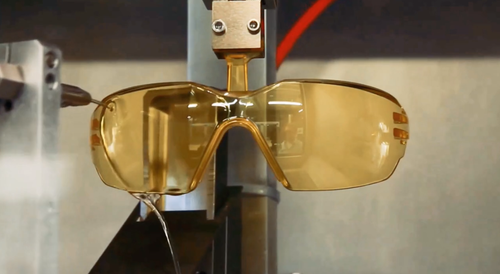Hydrophilic vs Hydrophobic Lens Coatings: What's the Difference?
By HexArmor Marketing Team.
Most workers in the industrial space are aware of anti-fog safety glasses. But what they probably don’t know is the science behind those anti-fog coatings.
Most coatings in the North American market are hydrophobic. Hydrophobic anti-fog coatings are soap-based and work by repelling and spreading the fog moisture as it hits the lens. When the moisture spreads, it eliminates the fogging on the lens. While this is effective, the coating will wash off over time because of its soap base.
Moisture-loving coatings are known as hydrophilic. Unlike hydrophobic coatings that repel water, hydrophilic coatings act like a microscopic sponge. Moisture droplets interact and absorb into the coating, eliminating fogging. The coating is able to hold a high amount of moisture and naturally releases that moisture at the edge of lenses, making them difficult to fog up.
Because hydrophilic coatings are not soap-based, they won’t wash off like hydrophobic coatings will.
How is that possible? Simply put, hydrophilic coatings are made with a proprietary chemistry that creates a polymer bond, permanently adhering the coating to the polycarbonate lens. Science at its finest.
Coatings that last a lifetime help keep your glasses working effectively so you don’t have to take them off. Wearability = compliance.
Make sure when choosing your safety glasses, you ask what kind of anti-fog coating will be on your lenses. While both hydrophilic and hydrophobic coatings can be effective, one coating remains permanently, while the other washes off over time.
This article was originally published on HexArmor blog post. Read the full article.
Eye protection is critical in maintaining visibility at a job site. Check out safety goggles, safety glasses and full-face shields for all your eye safety needs.
Recent Posts
-
Customizing Gas Detectors: Tailoring Solutions to Fit Your Unique Requirements
In today’s diverse industrial landscape, a one-size-fits-all approach to safety simply doesn’t cu …Jul 3rd 2024 -
10 Ways to Prevent Wildfires
You can prevent wildfires by extinguishing flames before you leave the worksite. Avoid practicing …Jul 1st 2024 -
ANSI/ISEA 138 Safety Gloves: Ensuring Hand Protection
The human hand is an anatomical masterpiece and arguably the greatest tool attached to our bodies …Jun 25th 2024





